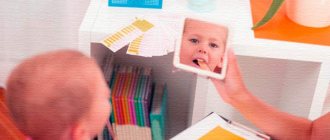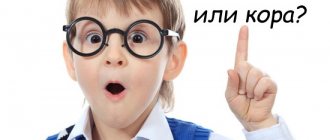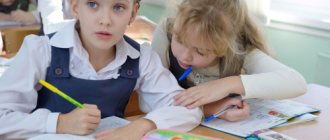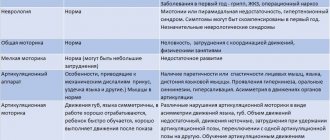Impaired pronunciation is the most common speech defect. It may manifest itself as follows:
● the sound is absent in speech, ● the sound is pronounced distorted, ● the sound is replaced by another, ● mixing of two sounds.
These disorders can be an independent defect, or they can be part of a complex speech disorder (phonetic-phonemic speech disorder, general speech underdevelopment, delayed speech and psycho-speech development)
There are 2 types of sound pronunciation disorders. Despite their external similarity, it is important to distinguish dyslalia from a more complex disorder - dysarthria.
Dyslalia is a violation of sound pronunciation with normal hearing and intact innervation of the organs of the speech apparatus.
Dysarthria is a disorder of the sound pronunciation side of speech, caused by a violation of the innervation of the speech muscles.
Causes of dyslalia:
- Features of the structure of the organs of the speech apparatus, the most common of which are malocclusion, short hyoid frenulum, high or low palate.
- Insufficient mobility of the organs of articulation, imprecision of movements or difficulties in switching from one position to another. In this case, the sounds are distorted. For example, instead of the correct sound “r”, the child pronounces “throat”, in the French manner, instead of the sound “l” - the sound “ue” .
- Lack of development of phonemic hearing and phonemic perception (the ability to recognize and distinguish speech sounds - phonemes). The child confuses similar sounds. At the same time, he experiences confusion or replacement of sounds. For example, “beetle” - “pike”, “fur coat” - “suba”, “shop” - “pakazin”, “paw” - “lyapa”.
- Imitation of incorrect speech of adults or children, excessive lisp, bilingualism.
Dysarthria, OHP - what's the difference?
Speech therapy work to overcome dysarthria at the Yusupov Hospital is carried out against the background of drug therapy and rehabilitation. Neurologists prescribe medications that have a nootropic effect, vitamin and mineral complexes. Rehabilitators use the following types of rehabilitation therapy:
- Segmental reflex and acupressure massage;
- Acupressure;
- Acupuncture;
- Physical therapy;
- Physiotherapeutic procedures;
- Mechanotherapy.
In organic forms of rhinolalia, anatomical defects are eliminated:
An individual pharyngeal obturator is manufactured;
Surgical correction of facial deformities is performed (uranoplasty, cheiloplasty, velopharyngoplasty);
Adenotomy, nasal polypotomy, septoplasty, and removal of pharyngeal tumors are performed.
To eliminate nasality in functional rhinolalia (dysarthria), physiotherapeutic treatment methods and psychotherapeutic techniques are used. Medical influence is complemented by differentiated speech therapy work.
Speech therapy classes for the correction of open organic rhinolalia caused by a cleft of the hard palate are carried out before surgery and after surgery. In the preoperative period, articulatory and respiratory speech therapy massage is performed (vibration massage of the soft palate and finger massage of fragments of the hard palate). At this stage, they work on producing and automating available sounds (while maintaining their nasal tone), developing the strength and flexibility of the voice, expanding the child’s vocabulary, and developing auditory attention and phonemic hearing.
The goal of correcting rhinolalia in the postoperative period is to consolidate the achieved skills in new anatomical conditions. To do this, massage the postoperative scars of the palate, develop a full velopharyngeal closure, and produce differentiated oral and nasal exhalation. Speech therapists pronounce sounds, eliminate the nasal tone of the voice, and work to eliminate gaps in phrasal speech and lexico-grammatical structure.
The Rehabilitation Clinic of the Yusupov Hospital offers the services of highly qualified speech therapists for adults suffering from dysarthria after suffering cerebral strokes, traumatic brain injuries and other diseases that have led to the development of speech impairment. An individual training program is drawn up for each patient to restore speech in a short time. In order to undergo diagnosis and treatment of dysarthria, call the contact center of the Yusupov Hospital.
Causes of dysarthria:
Organic lesions of the central nervous system that occur as a result of intrauterine hypoxia, intrauterine infection, birth injuries, as well as due to certain diseases at an early age (meningitis, encephalitis, trauma, etc.).
In addition to impaired sound pronunciation, dysarthria may have other symptoms:
- speech is unclear and unintelligible
- lack of expressiveness of speech, monotony;
- violation of voice timbre, speech “in the nose”;
- impaired speech breathing, weak voice;
- the pace of speech is accelerated or, conversely, too slow;
- pareticity of the organs of articulation: lips are flaccid, the mouth is often open, the tongue is flaccid, inactive;
- spasticity of the muscles of the organs of articulation: lips and tongue are tense and therefore inactive;
- deviation of the tongue to the side, tremor;
- hypersalivation (increased salivation);
- paresis and paralysis of the muscles of the limbs and trunk;
- clumsiness or imprecision of movements, poor coordination. Children master self-care skills late; they find it difficult to get dressed and button up. When drawing, they do not hold a pencil well, their hands are either weak, or, conversely, too tense. During sports or music classes, they may lag behind in the tempo of movements, not feel the rhythm, and have difficulty switching from one movement to another;
To distinguish erased dysarthria from complex dyslalia, a comprehensive medical and pedagogical study is necessary: analysis of medical and pedagogical documentation, study of anamnestic data.
By comparing the symptoms of speech and non-speech signs in children with dyslalia and dysarthria, diagnostic significant differences can be determined.
Thus, in children with erased dysarthria, in addition to impaired sound pronunciation, there is a violation of the voice and its modulations, weakness of speech breathing, and pronounced prosodic disturbances.
At the same time, general motor skills and fine differentiated hand movements are impaired to varying degrees.
The identified motor clumsiness and lack of coordination of movements cause a delay in the formation of self-care skills, and the immaturity of fine differentiated movements of the fingers causes difficulties in the formation of graphomotor skills.
In studies devoted to the problem of speech disorders in erased dysarthria, it is noted that disturbances in sound pronunciation and prosody are persistent and in many cases cannot be corrected.
This negatively affects the development of the child, the processes of his neuropsychic development in preschool age, and later can lead to school maladjustment.
These disorders have a negative impact on the formation and development of other aspects of speech, complicate the process of schooling for children, and reduce its effectiveness.
A relationship has been established between the pronunciation disorder itself and the formation of phonemic and grammatical generalizations, the formation of vocabulary, and coherent speech.
Comparison of dyslalia and erased dysarthria:
| For complex functional dyslalia: | For mild pseudobulbar dysarthria: |
|
|
Symptoms
Depending on the severity of speech disorders, four degrees are distinguished:
1st degree of severity – there is no pronounced pronunciation defect, deviations from the norm can be identified during examination by a speech therapist;
2nd degree of severity – speech intelligibility is preserved, but some disorders are already becoming noticeable;
3rd degree of severity - the speech of a sick person is understandable not only to close people, but also to some strangers;
Grade 4 severity – the patient’s speech is absolutely incomprehensible.
The clinical picture of dysarthria is characterized by general symptoms:
- distortion of sounds, words, syllables;
- facial muscle tension;
- limitation of mobility of the articulatory apparatus (lips, tongue);
- salivation;
- weak voice;
- shortening of exhalation.
FN
FFN
ONR
Comparative analysis of dyslalia, rhinolalia, dysarthria.
| p/p | Clinical and pedagogical classification definition | Etiology | Nature of damage to the vocal apparatus | Mechanisms | Forms. Subforms. | Degree of defect manifestation | ||
| Biological factors | Social and psychological factors | |||||||
| 1. | Dislalia | |||||||
Hearing loss
Vowels and consonants are disrupted (impaired differentiation based on oral - nasal, voiceless - voiced, anterior - posterior lingual) FNFFN
ONR
3. Dysarthria Primary:- underdevelopment of the phonetic side of speech (usually omissions, distortions)
- underdevelopment of physiological and phonation breathing
- voice disorder (timbre, strength, pitch)
- violation of the prosodic aspect of speech
Secondary
- underdevelopment of phonemic hearing
- lexico-grammatical underdevelopment
- writing disorders
Dyslalia: definition, causes, work plan. “The child is burring and does not speak the sounds R, L, S, Sh...”
At the very beginning of work, the doctor draws up a plan for solving the following tasks:
— The speech therapist must establish a friendly relationship with the patient, win him over and adapt to the environment of the speech therapy room, arouse his interest in the classes; — Formation of the child’s awareness of activities; — Develop memory and attention; — Teach phoneme recognition; — Form motor speech skills.
The preparatory stage is divided into the following areas:
— Formation of phonemic processes; — Formation of articulatory motor skills; — Formation of fine motor skills of the hands; - Strengthen reference sounds.
Development of phonemic processes. Before proceeding with the development of phonemic processes, it is necessary to form in the patient an idea of the sound that he needs to deliver. It is necessary to teach the child to distinguish specific sounds from similar sounds.
The features of this task are: 1. First, you need to form the child’s conscious involvement in the treatment process; 2. The development of phoneme perception should be carried out first on the material of words. 3. Help the patient distinguish between heard sounds in speech
Considering that the articulatory structure of a certain sound is not initially formed, it is impossible to work on its difference. However, this type of treatment is necessary at the preparatory stage, so it should be carried out using the example of intact pairs of sounds in words. To learn to distinguish a certain sound from its substitute, it is necessary to pronounce it in perception. It is worth prohibiting the reproduction of speech material with a defective sound until the phoneme is delivered. To do this, it is necessary to study the sound composition of words. For this purpose, patients are given tasks to determine the place of a sound in a word. It is important to consider that such constructions should be carried out only on the material of vowels and simple consonants.
From this it follows that the development of phonemic processes at the preparatory stage is carried out in the following directions: 1. Perception - discrimination and perception of sounds by ear; 2. Pronunciation – practicing speech using preserved sounds.
Development of articulatory motor skills
Since, with any form of dyslalia, the pronunciation of sounds is impaired, it is necessary to establish the correct articulatory structure or form the missing articulatory movements. There are no gross motor disorders, which means muscle tone is fine. However, the patient has not formed only individual voluntary articulatory movements. In this case, the development of motor skills should be voluntary, conscious and aimed at the development of new speech patterns. For this purpose, the speech therapist forms the missing articulatory patterns according to visual imitation. In front of a mirror, the child is shown the necessary posture of the organs of articulation. If difficulties arise, the speech therapist helps the patient using his fingers or a spatula. If the child still cannot physically imitate the doctor, then articulation gymnastics is performed.
The goals of articulatory gymnastics are: 1. Formation of kinesthetic sensations from the movements of the speech apparatus; 2. Creating an articulatory pose.
Articulatory gymnastics develops and shapes the mobility of the articulatory organs. For this, speech therapists use in their practice: exercises for the lips, tongue, lower jaw, soft palate, and so on. Speech therapy articulation gymnastics consists of static and dynamic exercises.
Static exercises develop the ability to create and maintain the desired articulatory position. And dynamic training develops operational switchability, dynamism and smoothness of movements.
When working with the tongue, the “Needle” exercise is used, for which you must follow the instructions: - Open your mouth slightly - Stick your tongue forward - Hold, counting to yourself to 10
Another dynamic exercise is the “Clock” exercise: the tongue should alternately touch the left and right corners of the mouth, counting one or two. The above activities must be performed on command so that they are conscious.
While working with gymnastics, the speech therapist is required to develop the following qualities: 1. Precision in performing the exercises. The quality is determined by the location of the shape of the speech organ. 2. Structured and smooth movements. The exercise should be performed without unnecessary movements and jolts 3. Maintain the pace. Initially, the task must be performed slowly, and then faster. The patient must learn to independently change the tempo of articulatory movements 4. Consolidate the result. The articulatory pose must be maintained for up to 15 seconds 5. Switchability. The change of movements should occur smoothly, but quickly 6. Movements of organs are symmetrical to the right and left sides
When conducting articulatory gymnastics, the following requirements must be observed: 1. Conduct classes with static and dynamic exercises 2. Classes with a combination of tongue and lips 3. The duration of classes should be short so as not to overtire the child 4. It is necessary to develop self-analysis of kinesthetic sensations with sound 5. Gymnastics should be carried out in a playful way 6. Tasks are performed in a sitting position so that the arms and muscles are relaxed 7. Articulation exercises are gradually made more difficult 8. Classes are conducted in front of a mirror
To determine the content of articulation exercises, it is necessary: 1. Parse the generalized sound into movements 2. Determine incorrect pronunciation 3. Form the desired structure through articulation exercises 4. Work with certain parts of the structure using differentiated articulatory gymnastics. Once individual movements have been worked out, they need to be combined. Next, the exercises include an air stream and working on the vocal folds.
In order to eliminate labial-dental pronunciation, use the following exercises for the tongue: 1. Hold the tongue on the lower lip and hold it for 5 seconds 2. Hug the upper lip with the tongue and hold this position 3. Hug the upper lip with the tongue and close the mouth with the tongue in the form of a “spoon” - close your mouth after this
Exercises for the lips: 1. Expose the lower jaw, lowering the lower lip and hold for 5 seconds 2. Hold the lips with a tube for 5 seconds 3. Make the lips a tube, and then smile. Repeat, alternating the position of your lips for a count of one or two.
As soon as the exercises are completed clearly and correctly, the speech therapist invites the child to make two articulation positions simultaneously and breathe or blow to hear the sound “sh”. If the sound still does not sound clear, work on clarifying it continues with the help of additional articulatory positions.
Next, it is important to form an air stream, for this follow the instructions: 1. Inflate your cheeks and hold the air in them 2. Alternately transfer air from one cheek to another 3. Retract your cheeks
Development of fine motor skills of the hands Usually, with dyslalia, the movements of the hands are impaired. To develop the functions of the hands, mosaics, lacing, fastening buttons, drawing, working with scissors, plasticine, working with small objects, and so on are used in practice.
Practicing reference sounds With dyslalia, vowels and consonants are preserved. If the articulation of consonants and vowels is incorrect, then the necessary sounds are set, and then they are used with patterns of complex sounds. By the way, the sounds “f” and “v” are the reference sounds for whistling and hissing phonemes. The shape of their formation is slotted; their reproduction requires a long, definitely directed air stream. The sounds “f” and “v” are among the easiest to pronounce. If the patient masters labial-dental sounds, then the correct pronunciation of whistling and hissing sounds automatically develops. If these phonemes are inaccurate, then the reason for this is weak articulatory muscles of the lips. In this case, it is necessary to form an air stream, which is also necessary for reproducing slot sounds. If a child cannot hold the tip of the tongue behind the upper teeth and pronounces them between the teeth, then when pronouncing the phonemes “r”, “l” or hissing sounds, the tongue will also be between the teeth. If the tip of the patient's tongue cannot be held between the teeth, whistling sounds will be suffered. By working on the articulation of the “t” sound, the correct structure of the “s” sound is formed. And if you connect the front part of the back of the tongue with the upper incisors, you get the sound “ts”. When working with the sound “s”, the doctor achieves a targeted air stream that moves along the middle of the tongue. Accordingly, when practicing reference sounds, the motor and auditory parts of speech develop. Thanks to this, the analysis and synthesis of word combinations is formed for the rapid automation of disturbed sound.
Non-speech symptoms
1. Dyslalia Primary:- underdevelopment of the phonemic aspect of speech, underdevelopment of speech breathing (short exhalation, weak air stream).
Secondary:
- violations of written speech.
Not expressed Pronunciation of consonant sounds of late ontogenesis FN is impairedFFN
2. Rhinolalia Primary:- underdevelopment of the phonetic side of speech (omissions, distortion, replacement, confusion of sounds)








